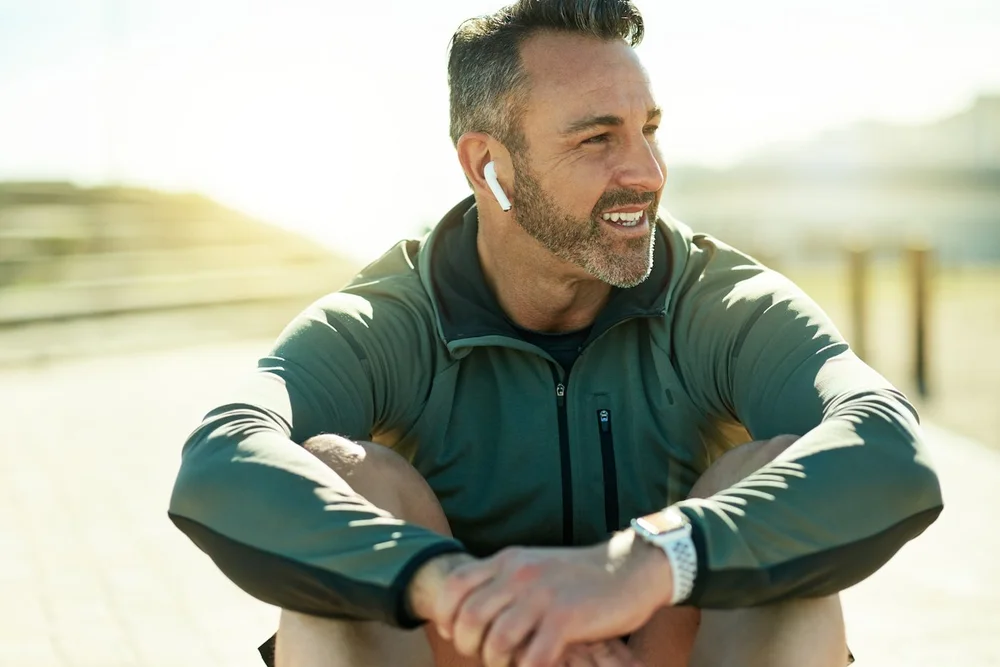Did You Know Physical Touch is Vital to Your Well-being?
We all need physical touch.
Physical contact with others can provide feelings of acceptance and pleasure. On an innate level, physical touch reassures us that we’re not alone in the world.
Though some people aren’t the “touchy” type, we all need physical contact to survive and thrive. This is true from the moment we’re born and all throughout our life.
Sadly, many Western cultures, especially the U.S., may be touch-deprived. This problem has been compounded during the coronavirus pandemic, since many people haven’t had regular contact with others in their family or circle of friends. Being shut off from others has caused many to feel isolated, lonely, and in low spirits.
Applications like Zoom and FaceTime allow people to see each other when conversing from remote locations. This has been a lifesaver for many during the darkest days of the coronavirus lockdown in 2020.
Though they’ve helped people communicate across great distances, these programs still can’t replace an in-person handshake, pat on the back, or hug. But other technology is attempting to solve this problem.
Some products on the market allow two people to hug remotely with a haptic hug vest or HugShirt. The vest/shirt connects wirelessly to an app on a smart phone and employs a series of haptic motors in the upper body and arms to create the sensations of a hug. Now little Petey in Peoria can hug his grandmother in Bocca Raton.
But while this technology simulates physical touch, is it as good as the real thing?
The Science of Touch
Research has suggested that physical touch is crucial to human bonding, communication, compassion, and overall health.
One fascinating study involved two strangers hidden from each other by a barrier, with one extending their arm through the barrier and the other coached to express an emotion when touching their arm. The person receiving the physical touch had to interpret the emotion being expressed by the person giving the tactile sensation. The receivers guessed compassion right nearly 60% of the time and guessed fear, gratitude, and love correct nearly 50% of the time.
Amusingly (or perhaps not), when a woman tried to communicate anger to a man through her touch, he failed to guess anger every time. Conversely, when a man tried to communicate compassion to a woman, she failed to identify the signal. Though substantially subjective, this study did objectively suggest that physical touch is important for conveying basic human emotions.
Physical touch is vital from birth and throughout one’s life. Lack of adequate touch can cause some infants to develop a condition known as failure to thrive, which can lead to feeding problems, gastrointestinal issues (GI), as well as liver, renal, and adrenal conditions even into adulthood.
Thanks to continuing research, we know that physical touch can be linked to feelings of compassion, cooperation, reward, and trust. Touch may have a positive physiological impact by lowering blood pressure and reducing cardiovascular stress. It also may help release the hormone oxytocin.
What is Oxytocin?
Sometimes referred to as the “cuddle hormone,” oxytocin is a hormone produced in the hypothalamus. There are receptors (biosensors) for oxytocin widely distributed on cells throughout the brain and other organs, making it a brain neurotransmitter as well as a hormone.
As a neurotransmitter, oxytocin promotes a sense of well-being, relaxation, and bonding. It may be best known for its involvement in childbirth and breastfeeding to strengthen the bonds between mother and baby.
Recently, oxytocin has become known as “the love hormone” as it brings forth feelings of trust, security, connection, calmness, and contentment. Researchers found that couples in the early stages of a relationship had higher levels of oxytocin compared to single people.
Oxytocin is thought to promote “pro-social” behaviors. When you care for others and feel cared for, your brain tends to release oxytocin, which can counteract many of the negative effects of stress and low mood. Also, acts of kindness can activate the brain’s pleasure centers and trigger the release of feel-good hormones like oxytocin to help boost your mood.
Oxytocin also has receptors in nerve pathways associated with the GI tract. It’s involved in regulating GI motility and opposing intestinal inflammation. It’s also thought to reduce stress and anxiousness while promoting relaxation and psychological well-being.
Oxytocin also has receptors in muscle, bone, and fat tissues, and is likely involved in regulating body composition, including muscle and bone renewal and the balancing of fat, bone, and muscle mass.
It may even regulate the conversion of fat into energy. Oxytocin even regulates food intake, helping to curb tendencies to excessive eating.
Since oxytocin has so many social, emotional, mental, and physical benefits, here are just a few ways to make sure you’re getting enough physical touch every day …
5 Ways to Boost Emotional Well-being & Oxytocin with Physical Touch
- Physical Closeness

- Learn to Self-Hug
If you’re single and need a hug, the DIY method works just fine. A therapeutic self-hugging technique called havening uses touch to create calming brainwaves. This therapy can help promote relaxation and a sense of well-being.
- Pet Your Pet
Snuggling with your furry, 4-legged companions can produce many of the same benefits as hugging your 2-legged friends. If you can’t wrap your arms around your human loved ones, reach for your dog or cat.
Spending time with your pet has been shown to promote calmness by increasing levels of oxytocin and decreasing production of the stress hormone cortisol. Owning a pet that needs to be walked means you’ll get outside for fresh air and sunshine, which can lower your blood pressure, reduce your stress, and perhaps even help you lose weight.
- Get a Massage
Getting a massage can do more than just improve your physical function. Clinical studies indicate that massages are beneficial for improving mood and coping with stress.
Massages can lower the stress hormone cortisol while increasing dopamine and serotonin activity. The physical touch from a massage will also help release oxytocin in your body.
- Stay Playful
This might be a challenge for those who are more on the reserved end of the spectrum, but always try to remain playful. If you’re joking around with someone, give them a gentle slug on the shoulder. Give a fist bump for a job well done, or when you greet or say goodbye to someone.
Physical gestures, no matter how subtle, can go a long way to showing your friendship and affection for others.
Get in Touch with Touch
Giving and receiving appropriate physical touch every day can provide emotional and mental balance in life. Increasing your brain’s oxytocin release – by giving or receiving a pat on the back, a loving caress, or petting your cat or dog – is incredibly important to your overall health and well-being.
Though it’s best not to force it, take the opportunity to hug or make physical contact with those closest to you or who are open to it (while observing current distancing guidelines). Remember, physical touch releases mood-boosting hormones like oxytocin in both you and the other person (or pet). This makes physical touch a win/win activity.
Apply these tips and share them with others to continue spreading happiness.
You deserve a big hug!
At BrainMD, we’re dedicated to providing the highest purity nutrients to improve your physical health and overall well-being. For more information about our full list of brain healthy supplements, please visit us at BrainMD.
- This Is What You Need to Know About HBOT
Medically Reviewed by Dr. Nicole Avena - April 22, 2024 - Hormone Changes in Men: How to Know If You Have Low Testosterone! - April 15, 2024
- This Is What You Need to Know About EMDR Therapy! - April 11, 2024



